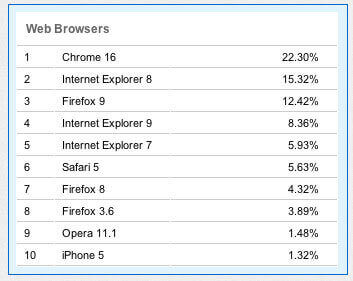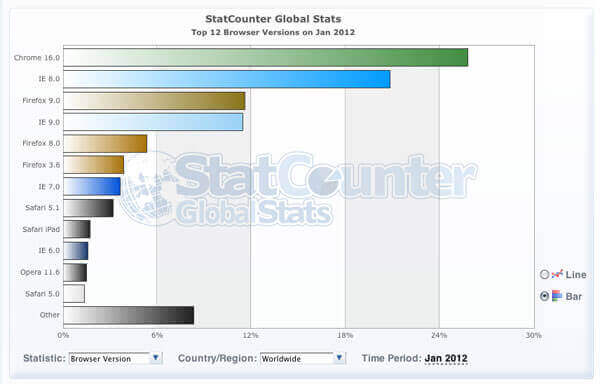Last year Microsoft finally got the hint and officially decided to say good bye to Internet Explorer 6 and even started their own website monitoring the worldwide usage of IE6. According to the website only 0.9% of the Internet users (in the U.S.) are still using IE6. I’m sure many web designers and developers are smiling about that statistic. Microsoft has also stated that the official end of Extended support for IE6 is on April 8, 2014. That date is also the same day that the Extended supports ends for Windows XP.
At the end of last year, Microsoft stated in a blog that starting in 2012 they will start automatically upgrading Windows customers to the latest version of Internet Explorer via Windows Upgrade. This is huge news for the future and the progress of the Internet. Since Windows XP users will be encouraged to upgrade to IE8 and Windows Vista/7 users will be encouraged to upgrade to IE9, it begs the question, does IE7 still need to be developed for?
Let’s check the stats
According to W3Counter, global usage of IE7 during January 2012 was 5.93%.

StatCounters global stats say IE7 usage during January 2012 is down to 3.63%.

The End of IE7 is near
Developing for IE7 usually isn’t that bad. Most of the time, IE7 will behave as expected if the HTML and CSS are coded to W3C Standards. But there are those certain CSS elements and jQuery scripts that gives IE7 fits. On some sites it can take just a few minutes to fix, other sites it can take hours. Sometimes it even requires that hacks be used to get things to work.
However, based on current web browser statistics and Microsoft’s efforts to get their customers to upgrade the latest version of Internet Explorer, it appears it’s safe to finally stop developing for IE7. Those browser statistics for IE7 are only going to get lower every month. Unless the client absolutely needs the website to work in IE7, developing a website for IE7 compatibility is development time that could be better spent elsewhere.



